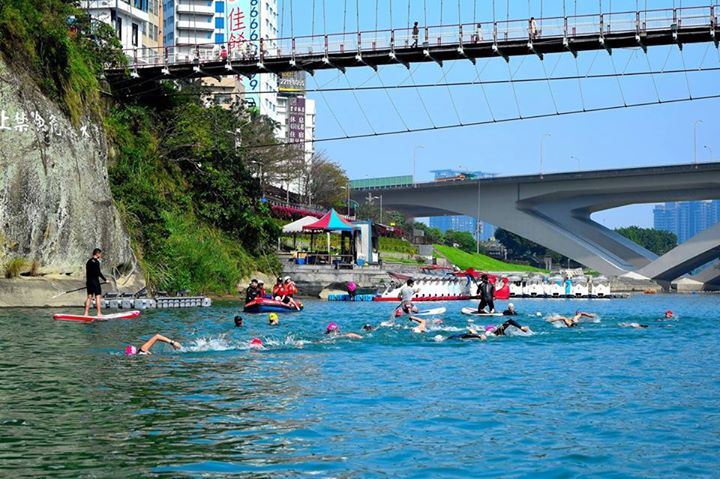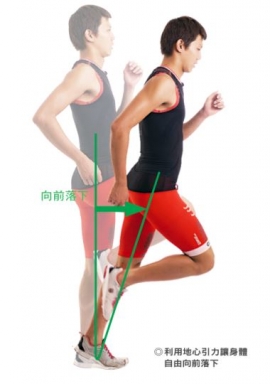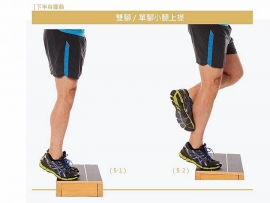以下为Swim Smooth网站中提到的CSS训练法,文中针对游泳详细解释了强度训练的方式,以及普遍选手对强度训练的迷失,让我们来看看以下文章的重点吧!!
你的游泳训练周期
Swim Smooth认为任何游泳训练计画都要平衡三个元素:“技术”、“体能”与“开放水域的游泳技巧”,每个训练计画都应包括这三个要素,但每个人的训练量会有所调整。你想必很担心这其中的关係吧?你需要来看看“训练计画”(training plans)。
假如你一周有三天可以训练,我们建议你使用以下排序:
技术训练
偏向长距离的耐力训练
处于乳酸阈值的临界速度训练
你游泳训练的质量
对于长距离游泳选手(包含开放水域游泳选手和铁人三项选手),身体的乳酸阈值数据是最重要的,乳酸阈值提升后,你的速度也将会同时提升。你的冲刺能力与无氧能力跟铁人三项运动与长泳能力是没有太大关联性的,就好像你能举多重跟你长距离比赛成绩并不相关。
诀窍在这里:想要提升你的乳酸阈值,必须在你在目前的乳酸阈值或是稍低于阈值的速度下进行训练,许多运动员容易犯的错是,时常在高于乳酸阈值区间的强度进行距离短的冲刺训练,这样的训练一点都不具有效率,我们将会在下方做出许多解释。
乳酸阈值/阈值/CSS配速
我们经常将“乳酸阈值”简称为“阈值”,两个词汇指的是同一件事。在实验室里我们在测量乳酸阈值的方式,是检验你在游泳运动强度增加时,血液中乳酸浓度突然增加的那一阈值点。虽然这是这是一个能够准确发现你阈值的做法,但在潮湿的情况下,採血就是一个代价昂贵又艰难的任务。
CSS是“临界游泳速度”(Critical Swim Speed)的缩写,这是一个逼近你乳酸阈值的游泳速度,你可以在几次的游泳测试中测量出来(不需要採血仪器的参与,只需要监控时间),这不是一个完整准确的值,但每100M的误差能在一秒之内。
在引导你训练的路上,CSS这个配速值会是一个明确的方向。
寻找CSS配速
CSS检测需要测验两种距离的最佳成绩,分别是400M及200M。测量前先做些短的渐速游来让你的身体活动开。必须先测验400M,测完四百尺后利用轻松游的方式来做恢复,如此一来就不太会影响到200M的测验,也能让你在这两趟测验中间能把消耗的体力恢复回来。切记蹬墙出发时不要潜水过长,测验的结果会比较准确。
尽可能在测试时用尽全力并做好配速,如果找不到别人记录你每一百的分段时间。你可以只记下总时间,再利用SwimSmooth中的计算器,找出你的CCS。
CSS Caculator.GIF
重要的是在短暂的休息时间内维持一样的速度。
CSS配速只是方向,让你的训练中充满乐趣,这与你平常的练习配速相比,可能会让你觉得这个配速稍慢了些,但是休息时间短,是一个不同挑战。在进行CSS的间歇训练时,你会觉得第一个100公尺游起来非常轻松,但当你的训练课程逐渐进行时,“坚持到最后”将会是你脑中最需执行下去的词汇。
配速节奏的重要性
当你在做CSS训练时,稳住配速是最关键的事,如果你前段速度过快后段放慢下来把时间游到,但这效果还是会打折扣,试着把每趟的速度平均。第一趟100公尺的配速是否稳定,以及之后每一趟的配速能力是区分职业选手及业余选手的分水岭。
重新找出你的CSS配速
我们通常都建议每4-6周就测量 400M+200M一次,如果训练结果顺利,每四周做一次的检测,你就会发现你的能力获得提升,接着你就必须在CSS课表中在将自己的速度配速提高。
对于多数的铁人三项训练选手,我们建议执行三周的扎实训练,即一周的缓和恢复训练,最好的CSS测验时间点为休息周快要结束时。
我不需要游得比我的乳酸阈值还要高的配速吗?
你相信吗?你不需要这么做。
要游得更快这种想法是来自于:“我需要练的比这个配速还要快,我的身体将可以使用这个配速”,这个逻辑是有缺陷的,因为身体不是这么运作的,当你训练比阈值还高的速度时,你也同时在破坏你的无氧能力,在长距离的比赛当中你不太需要无氧能力。在训练结束,你需要提供身体高品质的休息,留下些许的能量来让身体适应,因此我们才会建议利用适当的训练配速(CSS)来提升阈值能力,并用它刺激阈值的适应能力,除此之外别无他法。
不相信以上的说法吗? 把游泳训练当作重量训练来看看。假如你想要增加卧举的最大肌力,你想要将目标放在举起60KG上,但目前的你只能举起50KG的重量,能力无法负荷60KG,训练时做点45-50公斤的重量来让身体适应及提升,给身体施点压力藉以提醒它去适应你目前身体能负荷的极限值。
还是不太承认这个训练法吗?
来点改变吧!! 尝试做四周的CSS训练吧!四周后你会发现你的速度提升了,开始做CSS训练吧,他就是有这种魔力!!
所以我永远不需要游得比我的CSS还要快吗?
所以我永远不需要游得比我的临界速度还要快吗?你绝对需要在训练课程中安排短冲训练及无氧训练,这两项的训练有助于提升你的游泳经济效益,他们能带给你在水中高速移动的感受和训练你的神经肌肉反射,如果你现在的训练有的比例是无氧谎,我们建议你大幅转到CSS的训练配速上。这事实上意味着把配速和休息时间放慢及缩短,增加游泳速度的维持能力。
所以训练中一样需要做无氧阈值及速度训练,但要缩短训练中的比重。
原文出处:Training for Swimming – Maximise Your Speed With CSS / Threshold Work
参考资料:Paul Newsome and Adam Young, Swim Smooth, Chapter 27, Wiley Nautical, 2012
心得:
看完文中所叙述的,了解CSS训练法的重要性,可以从中了解,与丹尼尔博士在《丹尼尔博士跑步方程式》(Daniels’ Running Formula)中一直强调的T配速的概念相符。这让我们知道在训练当中,不只要随时监控着强度不要过高,还要在训练课程中安排“无氧阈值”和“短距离冲刺”训练,其实这些训练对于一位想要力求进步的铁人三项选手来说,要完成这些训练并不难,只需要几次的尝试,把自己的配速感抓到,再配合稳定的练习要达到自己要求的秒数可说是手到擒来。
不过,以目前普遍的铁人选手来说,很容易会被自己的伙伴刺激或是被怂恿,常常都会为了面子,硬是跟上别人的配速,不但训练到不对的配速,又让自己身处在受伤的风险里,可说是赢了面子输了里子,最后建议想参照CSS训练的选手们,拿定自己的配速,持续做训练一段时间,真的要拼速度的话,比赛再来见真章吧!!!
Your swimming week
Swim Smooth believe that every session you do should have a balance of 3 elements – technique, Fitness and open water specific training. If you are swimming three times a week we suggest you hit this sort of routine:
1x Technique orientated session
1x Endurance biased session with longer steady paced swim sets
1x Quality session working on your threshold speed
Each of those sessions will contain a little of the 3 elements technique/fitness/open water skills, but the amount of each will vary between the sessions.
Worried about getting this right? You need one of our training plans to follow!
your quality swim sets
For distance swimmers – including open water athletes and triathletes – one physiological factor is all important: your lactate threshold. If you can improve your lactate threshold speed your race speeds will improve. Your ability to sprint or work anaerobically above threshold is largely irrelevant in distance swimming and triathlon. So is your ability to lift heavy weights.
Here’s the secret: To improve your lactate threshold you want to do your quality swim sets at your current threshold pace or just below it. Many athletes make the mistake of training above lactate threshold in short sharp swim sets – that isn’t nearly as effective. We’ll explain more about getting that right below.
Lactate threshold, threshold and css
In the training and coaching world we often shorten ‘lactate threshold’ to just ‘threshold’ – it means the same thing. In a laboratory we’d measure your threshold by taking small samples of your blood as you exercise at increasing intensities and look for the characteristic kick up in blood lactate when you reach your threshold swim speed. Blood tests like that are expensive and tricky to perform in a wet environment, fortunately there is a better way to find your threshold speed. Enter CSS.
CSS is an acronym for Critical Swim Speed. It’s an approximation of your lactate threshold speed and you can find it by doing a couple of swimming tests (no blood involved – just a stopwatch!). It’s not precisely the same as lactate threshold but it will be within a couple of seconds per 100m, which is plenty accurate enough to guide your training.
test to find css
The CSS test involves two timetrial swims – a 400m and a 200m. Before attempting these swims perform a thorough warmup and a small build set to get you used to swimming fast.
Do the 400m timetrial first, it’s less likely to effect the 200m than the other way around. Recover completely between each timetrial with some easy swimming. Perform both timetrials from a push off from the wall, not a dive.
Try and pace the trials as evenly as possible, don’t start too fast and slow down. If you’re not sure get someone to take your 100m splits – they can be very revealing.
Calculate your Critical Swim Speed (think threshold speed) using the calculator:
The key point with all these sets is sustained speed with short recoveries. These are just examples, make up your own sessions to keep things interesting.Compared to how you normally train you might find the pace slightly slower but the recoveries much shorter. It’s a different sort of challenge.
CSS feels easy for the first few hundred metres but creeps up on you as the sets go on. The word ‘relentless’ probably describes it best!
the importance of pacing
When you swim CSS sets it’s important to pace things well. If you start too fast and then slow down you won’t get the same training benefit.
Try and swim each repetition at the same pace. Very often this will mean the first few hundred metres feels fairly steady – good pacing technique is an important skill to learn and is one of the key differences between amateur and elite swimmers.
retesting your css
We’d normally suggest repeating the 400+200m CSS test every 4 to 6 weeks. If things are going well then test every 4 weeks because your fitness can improve quite fast and you’ll need to increase the pace of your CSS sets.
For most triathletes we suggest training hard for 3 weeks and then taking an easier recovery week. The perfect time to repeat the CSS test is at the end of the recovery week.
don’t i need to swim faster than my threshold to improve it?
Believe it or not, no you don’t. That line of thinking comes from “I’ll train at this faster pace and my body will get used to it". That logic is flawed because the body doesn’t work like that. When you train faster than threshold you end up splitting the train effect into your anaerobic system too – which you don’t need much when you race. And you give your body a much greater recovery task after the session, which means it has less energy left over to make the fitness adaptations you are looking for. The result is that training above threshold gives you less adaptation of your threshold,not more.
Not convinced? Compare it to weight training. Say you wanted to increase your maximum bench press. You can currently lift 50kg and want to get to 60kg. You can’t go and lift 60kg – you’re not strong enough. But by doing sets at 45-50kg your body adapts and improves. To stress a body system and prompt your body to adapt you just need to approach your current limit.
Still not convinced? Take the challenge! Try it for 4 weeks, swimming one CSS session per week. Over 4 weeks you’ll notice your speeds improve as the CSS training starts to work its magic.
should i never swim above threshold then?
You certainly can include some anaerobic work and short sprints in your training – they’re good for your swimming technique in themselves: they give you a feel of the water at higher speeds and trains your nervous system to the higher forces. What we’re suggesting is you shift your big training sets away from anaerobic swimming to CSS swimming. In practise this means slowing the pace a touch and shortening the recoveries – making the speed more sustained.
So, still include some anaerobic and sprint work but reduce it and give it less importance in your swimming.
作者:杨志祥
长跑训练: //www.nduoke.com//www.nduoke.com/long-runs
节奏跑训练: //www.nduoke.com//www.nduoke.com/tempo




